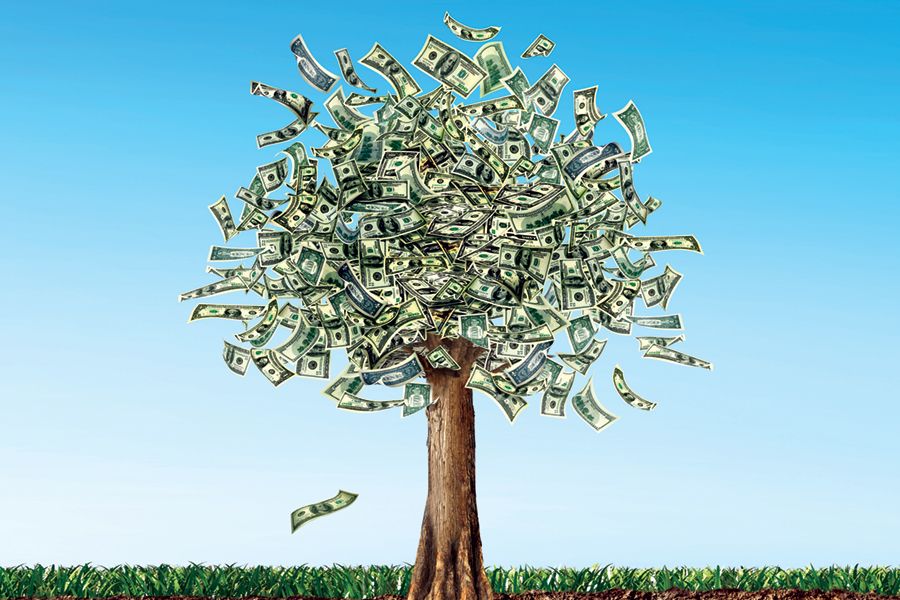Bloomberg Intelligence has predicted ESG assets are on track to exceed $53 trillion over the next four years, as a result of the “perfect storm” created by the COVID-19 pandemic and the “green recovery” in the U.S.
The organization’s Global ESG 2021 Outlook, exclusively seen by ESG Clarity, forecast ESG assets could become a third of the projected $140.5 trillion expected to be held in assets by 2025, with 2021 poised to be a “pivotal” year with ESG reframing markets.
The momentum seen in 2020 — with Bloomberg recording a threefold increase in the number of companies setting net-zero targets and more than 330 new ESG funds launched by the third quarter — will continue to accelerate into this year and will lead to increasing regulatory and shareholder oversight, writes Bloomberg Intelligence head of ESG and thematic investing EMEA Adeline Diab.
“More than $3 trillion in fiscal stimuli globally will be dedicated to financing a green recovery to spur consumer spending, corporate funding, and in turn, employment. ESG assets may top $53 trillion by 2025 as ETFs and debt expand, though underperformance may persist for the U.S. next year,” the note said.
“Global ESG assets are on track to exceed $53 trillion by 2025, representing more than a third of the $140.5 trillion in projected total assets under management. A perfect storm created by the pandemic and the green recovery in the U.S., EU and China will likely reveal how ESG can help assess a new set of financial risks and harness capital markets.”
The figures are assuming just half the pace of the 15% growth seen over the previous five years, so ESG assets under management could climb even further, Diab adds. Assets stood at $37.8 trillion by the end of 2020.
From a regional perspective, European ESG assets has seen a lot of the growth over the past decade and account for half of global ESG assets. However, the note said the U.S. had the strongest expansion in 2020 and could take over Europe by 2022.
Bloomberg also predicted the “next wave of growth” will come from Asia, particularly Japan.
Debt
Looking at the credit markets, Bloomberg’s Diab said the $2.2 trillion debt market could reach $11 trillion by 2025, again assuming it expands at half the pace of the past five years.
Green, social and sustainability bonds were poised to surpass $2 trillion in cumulative volume by the end of 2020, according to the latest Bloomberg figures, a milestone reached with the year’s meteoric rise of social bonds.
“Organic growth in ESG debt is unlikely to slow, driven by companies, development projects and central banks, with pandemic and green-recovery efforts helping to scale up the market in the short term. EU pledges of €100 billion to support employment and €225 billion to fund a post-pandemic recovery, U.S. President Joe Biden’s $2 trillion energy strategy and the challenge of China’s 2023 green-debt maturities all signal ample room for new issuance.”
Products
Meanwhile, Bloomberg Intelligence also predicted “accelerated growth across asset classes and themes” in terms of product launches. The note also highlights Morningstar data that showed in just the first three quarters of 2020, 330 new ESG products were brought to market — an “unprecedented level of product development”, commented Diab.
While equities dominates product offerings, credit represents 20% of new ESG funds, said the Bloomberg Intelligence research, and more thematic products are emerging.
“Climate remains king, accounting for about 25% of ESG funds launched in 2020,” it said.
Performance
Amid last year’s COVID-19 stock market fallout, stocks and funds with higher ESG credentials tended to outperform. However, this levelled out towards the end of 2020. The report explained ESG funds appear to carry less risk and have been beneficial in market downturns, though factor exposures make it tough for them to keep up in a bull market.
Contributing to the report, ESG research analyst Shaheen Contractor explained: “Active factor exposures for U.S., Europe and World ESG indexes tilt toward low-volatility and quality stocks (those with high profitability and low leverage). ESG funds are viewed as long-term investments, where stock mixes tend to outperform over longer horizons. The MSCI World ESG Leaders Index is less volatile than its benchmark, with a two-week value at risk of 3.18% vs. 3.28%. Such indexes, however, lean away from momentum stocks and have a lower beta, implying struggles in a bull market.”
She added this is a theme that could continue this year: “Exposure to the low-volatility factor may continue to hurt some regional ESG-themed indexes if risk-on equity sentiment continues. Weighed down by one-year performance, the MSCI USA ESG Leaders Index (USSLM) trailed its non-ESG counterpart by 4.1% from April to Nov. 13, coincident with laggard low-volatility exposure that’s reflected in our strategy team’s view of a continuation. The MSCI Europe ESG Leaders Index (EUSI) has gotten comparatively more support from the low volatility factor.
“The index tracking ESG themes in emerging markets (M1EFES) is the only one to beat its benchmark, perhaps indicating greater efficiency. ESG issues such as labour standards and corruption tend to be greater EM risks.”
Despite this, ESG investors appear to be focus on the long term and therefore assets are “stickier.”
Pointing ETF flows as an example, Contractor commented: “ETFs based on ESG and similar values recorded net inflows of $18.8 billion in Q3 of 2020, the highest of any quarter on record. Net inflows reached $49 billion in the first three quarters and are on track to increase more than 2x vs. 2019. ESG ETFs also have seen the highest flows among so-called smart-beta strategies in the US and Europe.
“This suggests ESG investments tend to stickier and noncyclical and can be viewed as long-term holdings that are making their way into advisers’ model portfolios and allocation strategies.”








